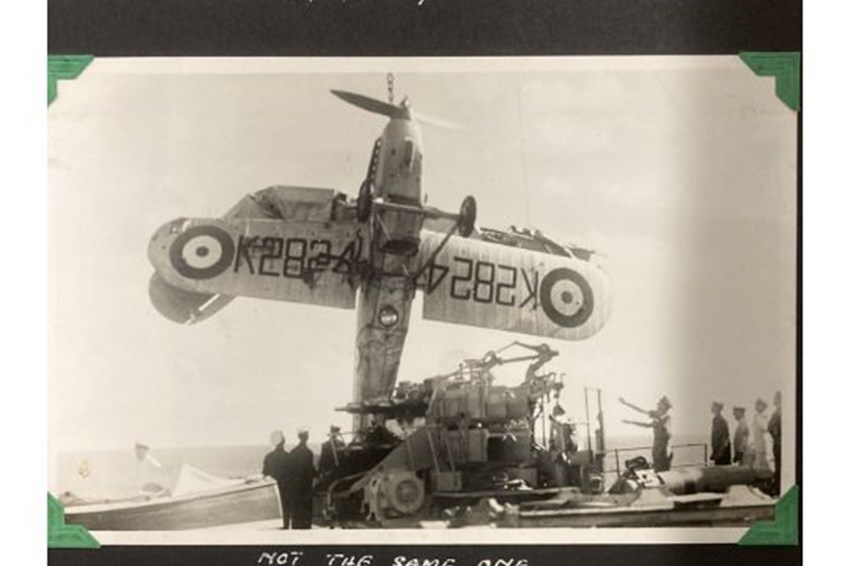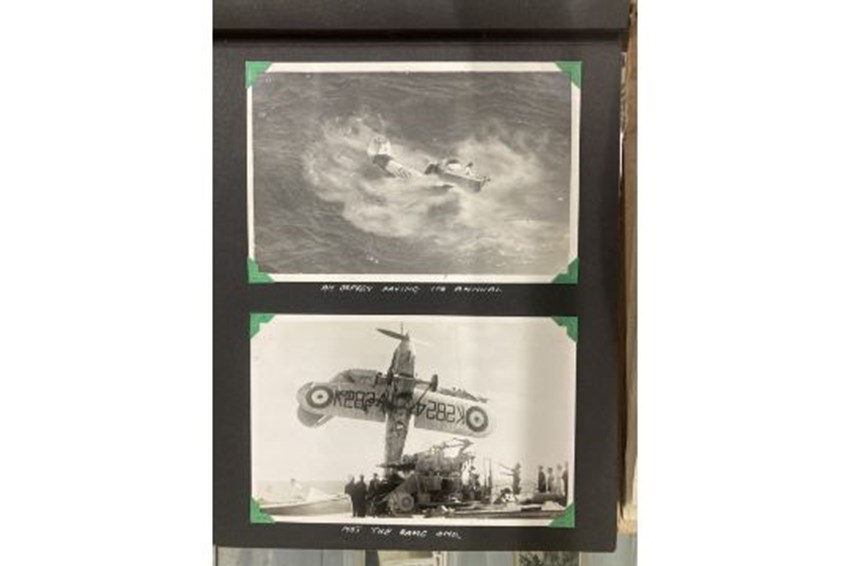Bravery and blunder in the Med: Sailor's pre-WWII snaps from HMS Glorious
28th January 2022
28th January 2022

In the mid-1930s, Europe was on the brink of another colossal war that would plunge large parts of the planet into terror and darkness.
By 1936, Hitler had torn up the Versailles peace deal which had ended the First World War by rearming Germany and reoccupying the Rhineland.
Just two years later, Austria and the Sudetenland in Czechoslovakia would fall under Germany’s growing shadow – and the world watched with bated breath as Berlin prepared for the invasion of Poland that would trigger a second world war.
Now, astonishing photos from 1935 and 1936 show the full range of Britain’s bravery and blunder in those terrifying interwar years.
Two photo albums previously unseen show HMS Glorious, a First World War battlecruiser that was repurposed as an aircraft carrier and sunk during the evacuation of Norway in June 1940, on patrol with 802 Squadron in the Mediterranean Sea.
One set of photos shows biplanes barely hitting their targets and often crashing to the ground during naval exercises.
Another shows Glorious heroically coming to the aid of an Italian passenger liner on fire off the coast of Egypt, in which British sailors battled to put out the flames and 263 people were saved, with six crew members killed or unaccounted for.
The images were taken by an unknown British seaman. The albums are being sold with auctioneers Henry Aldridge & Son, of Devizes, Wiltshire.
An auction house spokesperson said: ‘These albums of HMS Glorious in 1936 include numerous carrier landings and crashes with handwritten notations.
‘Sadly, we do not know the identity of the British seaman who took the pictures.’
Glorious was an 876ft long vessel which could carry 48 aircraft including Fairey Flycatcher fighters and Blackburn torpedo bombers.
She used by 802 Squadron and other photos in the album show a tornado ripping through their airbase in Malta, then a part of the British Empire, in November 1936.
However, the aircrew appear in good spirits as they pose on top of the wings of an aircraft which emerged unscathed.
Glorious was the second of the three Courageous-class battlecruisers built for the Royal Navy during the First World War.
She was completed in late 1916 at a cost of nearly £2million, and spent the war patrolling the North Sea, taking part in the Second Battle of Heligoland Bight in November 1917.

Glorious was even present when the German High Seas Fleet surrendered in 1918.
The battlecruiser was paid off after the war, but repurposed as an aircraft carrier during the 1920s after the Washington Naval Treaty of 1922 limited the total tonnage of battleships.
Glorious had a cruising range of over 7,000 miles and was powered by 18 Yarrow boilers driving four geared steam turbines that turned four propeller shafts capable of a maximum speed of 32 knots.
Equipped to handle up to 48 aircraft and more than 1,000 men at full capacity, she was fitted with 16 4.7in naval guns and three 40mm multi barrel AA guns.
Unique to aircraft carriers, she also had a pair of underwater torpedo tubes and had a compliment of 10 torpedoes on board.
After recommissioning in 1930, Glorious spent most of her career in the Mediterranean.
After the start of the Second World War, she spent 1939 unsuccessfully hunting for the commerce-raiding German cruiser Admiral Graf Spee in the Indian Ocean before returning to the Mediterranean.
Glorious was recalled home in April 1940 to support the evacuation of British aircraft from Norway, desperately attempting to stop Germany’s invasion of the Scandinavian country by ferrying over fighters.
In June 1940, intelligence made it apparent that the Germans were making massive strides in mainland Europe – and that Britain’s force in Norway would be better suited to support efforts in France and Belgium.
Tragically, more than 1,200 people were killed after Glorious was sunk by the German battleships Scharnhorst and Gneisenau in the North Sea.
In 1931, Glorious had been on manoeuvres off Spain on April 1, 1931, with 17 of her Flycatcher aircraft flying above when she entered a fogbank.
Her crew only noticed the SS Florida sailing across her path at 30 knots at the last minute.
A sickening collision followed in which 32 passengers and one crewman on board the Florida either drowned or were crushed to death.
The look-out on the Glorious, Able Seaman Ernest John Bicker, was also killed.
The sale of the photos, which are valued at £120, takes place tomorrow.